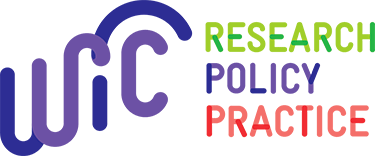The objective of this study was to examine attitudes and knowledge about vaccinations in postpartum mothers. The study showed that although the majority of infants received vaccines, their mothers had concerns and would like to have received immunization information earlier. Mothers who are primiparous; have low family incomes, but do not qualify for the WIC Program; or are breastfeeding might need special attention to develop a trusting relationship regarding vaccinations.
The researchers examines the effects of maternal and provider characteristics on the up-to-date immunization status of children. Results showed that low maternal educational levels and low socioeconomic status were associated with high 4:3:1:3 series completion rates. Also, completion rates were high in Hispanic and non-Hispanic black families with low income-to-poverty ratios.
This study assessed immunization-related barriers among children in the WIC Program, a population at risk of undervaccination. Results indicated poor immunization rates, which improved with assessment and referral. DTaP;which protects against diphtheria, tetanus, and pertussis—was the most commonly missing vaccine. Lack of insurance increased risk of undervaccination.
Coordination between WIC and Medicaid has been an important component to ensuring that WIC clients have access to primary care services. This study examines how increased use of managed care in the Medicaid program had affected WIC Program coordination efforts. According to the study sample, 72% of state Medicaid agencies reported that Managed Care Organizations (MCOs) were required to inform their members about WIC. About 43% of state WIC agencies sampled in the study had a formal agreement with a state Medicaid agency, generally revolving around data sharing, referrals, and provision of special metabolic infant formulas. The agreements often lacked specific details on how services should be coordinated, however. Some local WIC agencies and MCOs had implemented innovative approaches to coordination. These approaches included collocating Medicaid staff at WIC clinics, to help clients with enrollment; sharing information to promote targeted outreach efforts; helping clients identify providers and resources; and receiving funds from MCOs to cover WIC clients; transportation costs to attend WIC appointments.
Since 1998, the CDC has monitored the WIC/immunization linkages assessment and referral (with and without the more aggressive strategy of monthly voucher pickup, client outreach and tracking, and parental incentives) and three other immunization supporting activities (computerized systems to assess immunization status, collocation of WIC and immunization services, and coordination of WIC and immunization services). Through an annual survey of state immunization and WIC programs, the authors conducted a trend analysis for the years 1998 through 2004 to determine changes in the use and frequency of WIC/immunization linkage activities.
The authors assessed selected predictors for the inclusion of oral health counseling by Illinois WIC providers. The results suggested that when WIC providers had some oral health training, they were more likely to provide counseling about dental disease and its prevention.
This study used a social ecological model to examine the influences of sociodemographic factors, mothers; attitudes, financial barriers, and the healthcare delivery system on the use of dental services for 4- to 8-year-old Hispanic children. The results showed that initiating dental care during the preschool years was significantly related to the mothers; beliefs and their social networks ; beliefs in the value of preventive dental care. In addition, extended clinic hours increased the likelihood of returning to the dentist. Provider availability, dental insurance, and family income were related to frequency of planned visits.
The purpose of the study was to examine the effects of knowledge and confidence on dental referral practices among WIC nutritionists in North Carolina. The study showed that the more confident WIC nutritionists felt about their ability to assess oral health risk, the more likely they were to make dental referrals. Because a child's first point of contact with a health professional is frequently at a WIC clinic, WIC workers might improve children's access to dental care, by providing screenings and referrals.
This retrospective cohort study determined whether children who remained active at WIC immunization-linked sites after their first birthday were more likely to be immunized by ages 19 months and 25 months than those who had dropped out. The study concluded that children who participated in WIC were more likely to be immunized, compared with children who had dropped out of WIC.
This study estimated the effects of the WIC Program on dental-related Medicaid expenditures for young children. The researchers concluded that the WIC Program had the potential to decrease dental-related costs to the Medicaid program, while increasing use of dental services.
